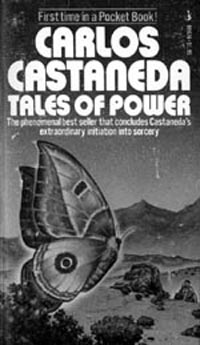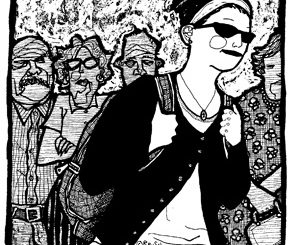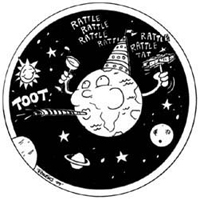 Memory Holers
Memory Holers
The Death and Death of Carlos Castaneda
by Kerry Joyce
Ink trickled, clotted, scabbed and quickly stopped throughout our national media last Spring when it was learned that “counterculture icon” Carlos Castaneda, author of The Teachings Of Don Juan, and other best selling works, had died on April 27, 1998. Even the nether corners of the Internet seemed to register the news like a great Dane lapping up an errant Cheerio from the linoleum. In Boston, the New Age free paper, EARTHSTAR, observed the occasion with a reprinted article from the city’s second largest newspaper, four months after the fact.
Sure, “icon” is one of the most overworked terms in journalism. Anyone whose celebrity kilowattage outshines that of a utility infielder from a New York Yankees pennant winner is dubbed an icon these days upon giving up the ghost. In truth, Castaneda, like novelist J. D. Salinger, is one of those rare writers for whom the term “icon” actually fits. They both managed to get their mugs on the cover of Time Magazine, although I really shouldn’t say “managed” – neither actively sought the limelight.
Take my word for it, the week after Salinger finally gives up his mortal coil, which will probably be the only part still working at that point, you’re going to be scurrying for the remote with the worst case of compassion fatigue since the space shuttle Challenger disaster. There’ll be hand-to-hand combat at NPR over which 17 people will get the privilege of broadcasting their definitive J. D. Salinger eulogy.
 But what about Carlos, man? Like Salinger and certain footpowders, Castaneda not only soothes but has rich penetrating action to get to the root of the itch. Moreover, Castaneda was a Hispanic immigrant whose books purported to explore the religious beliefs of an indigenous people of the American Southwest, the Yaqui Indians. Here is a Peruvian (or possibly Brazilian) author explaining Native American precepts to a largely young, affluent white readership, and what we get from the multi-culturists (a force to be reckoned with in the arcane publishing arm of academia) is deafening silence.
But what about Carlos, man? Like Salinger and certain footpowders, Castaneda not only soothes but has rich penetrating action to get to the root of the itch. Moreover, Castaneda was a Hispanic immigrant whose books purported to explore the religious beliefs of an indigenous people of the American Southwest, the Yaqui Indians. Here is a Peruvian (or possibly Brazilian) author explaining Native American precepts to a largely young, affluent white readership, and what we get from the multi-culturists (a force to be reckoned with in the arcane publishing arm of academia) is deafening silence.
So what gives? Was the New York Times perhaps overstating the case when it called The Teachings of Don Juan an “extraordinary spiritual and psychological document”? How many works so praised also make the best-seller list? Have our spirits and psyches evolved in the last few decades so much beyond it?
Castaneda’s books continue to sell well, but part of the problem with these “remarkable works of art,” as Joyce Carol Oates called them, lies in their essential nature. Are they fiction or non-fiction? Castaneda insisted up to the end that his books were non-fiction, that the Yaqui Indian sorcerer he apprenticed with, Don Juan Matus, was an actual person. He received his Ph.D. in anthropology from the University of California for the research described in these encounters with Don Juan, and The New York Times Book Review also called Castaneda’s work among “the best that the science of anthropology has yet produced,” though his work is now generally regarded as an elaborate hoax.
Castaneda’s legacy is most saddled by the perception that he not only sold a lot of books, he also sold a lot of LSD, psilocybin, peyote, and marijuana. Not in the literal sense of being a drug pusher, but by promoting the idea of using substances in nature to alter consciousness as a gateway to the transcendent, to spirituality, to a way of life that lifts existence out from under the yoke of the scientific method. If the leaders of the world believe people are simply machines, is it any surprise that people start acting that way?
Another problem for Castaneda’s legacy is that when you get right down to the philosophy of them, his books are not terribly New Age in the contemporary sense. Don Juan considered himself a warrior. He battled with the forces of nature and worked to subdue them on his own terms. His philosophy sounds more like Spanish machismo than the “living in harmony of nature” mythology we rightly or wrongly associate with Native Americans. This is one reason critics initially cried foul about Castaneda’s so-called research. Though stylistically shamanistic, Don Juan seemed to have garnered his philosophy from a variety of texts of world civilization.
Like many prophets, Don Juan performed miracles. But where most prophets use miracles as exclamation points to demonstrate their divine authority, Don Juan’s miracles also served as an end in themselves – to tear down the curtain of ordinary reality, and to challenge its validity. This is when the Castaneda books are most compelling, when Castaneda writes of those frequent post drug-taking exchanges:
“Did I really become a crow? I mean would anyone seeing me have thought I was an ordinary crow?”
 “No, you can’t think that way… It takes a very long time to learn to be a proper crow.”
“No, you can’t think that way… It takes a very long time to learn to be a proper crow.”
This sorcery of Don Juan’s or Castaneda’s or whomever’s was an infuriating sort – it depended on drug-induced states for its magic; what we had to settle for in a cynical, science-savvy age. But magic it was from a simpler time of not so long ago when there was somewhere to hide in a contemporary myth because there was somewhere to hide in fact. Today, CNN would ensure that Don Juan himself was quickly held up for televised scrutiny or they and you the viewer would know the reason why.
A couple of months after Castaneda died, I went to a used bookstore and bought a half dozen Castaneda volumes for about $12. The owner was surprised to learn that Castaneda had died. I was surprised that, despite the so called information revolution, Castaneda has been flushed down the memory hole to the extent that a knowledgeable book store owner in Cambridge, MA hadn’t heard of his death two months after the fact.
I suppose Salinger is more indispensable, and his work will outlast that of Castaneda. Rightly so. The youth of America will continue to have their souls shoved through the sausage grinder, to be stuffed into skins marked teacher, lawyer, engineer, or no-account, and Catcher In The Rye will be one of the books of common prayer that will help them through the grief of making that alto-inducing passage into adulthood.
I went back and re-read a couple of Castaneda’s books, and after twenty years, I think they hold up pretty well. Not only as significant period pieces but as literary works that helped shape and ultimately outlasted a significant cultural epoch. But even if print and electronic media ignore Castaneda, his books will continue to sell thanks to that still thriving oral tradition known as word of mouth.



